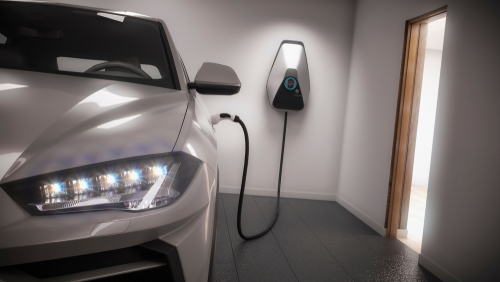Utilities should consider time-varying rates for EV charging to accelerate adoption, new report finds

Adoption of electric vehicles (EVs) might stall if off-peak residential charging isn’t streamlined.
That’s a concern expressed in a just-released report “Residential Electric Vehicle Time-Varying Rates That Work: Attributes That Increase Enrollment,” made available by the Smart Electric Power Alliance (SEPA). The report findings noted that unless key players analyze and approach residential charging issues, the system may break down due to costly distribution system impacts and needed infrastructure upgrades for utilities. That could lead to discouragement and frustration for everyone, even ardent EV supporters.
“You need to design rates that work for people especially depending on their needs,” said Erika Myers, principal of Transportation Electrification at SEPA and one of the report authors. “The first thing utilities should do is determine outcomes and objectives and design their processes from there. Utilities have different starting points, because a lot of utilities do incentivize off-peak EV charging. Still, the cost savings (and participation rates) might be more robust if you consider design [options].”
The just-released report is the first of its kind to offer a near step-by-step outline on how utilities can encourage customers to adopt off-peak EV charging and the success rates of utilities that follow different plans. Convenience, low costs and an emphasis on environmental benefits are all factors utilities should stress in customer education programs. Empirical data, real-life success stories and easy-to-implement options are among the details that Myers sees as the most valuable information in the report.
The SEPA report, produced in partnership with The Brattle Group, Enel X, and E4TheFuture, provides empirical evidence on factors that increase customer enrollment in EV time-varying rates. The analysis is based on a survey of nearly 3,000 EV customers and 28 utilities offering EV rates – the most comprehensive survey on the topic to-date.
Lauren Burke, senior director of Marketing & Development at Enel X, added that convenience may matter more than price to some consumers.
“The survey data from our JuiceNet customers was clear: EV drivers not enrolled in TOU rates are primarily motivated to charge when it is most convenient, but could be influenced if the savings were greater,” said Burke. “Given the diversity of customer charging preferences and price sensitivities, utilities have an opportunity to engage more EV owners and increase enrollment rates by offering multiple rate options.”
Study authors hope the report will help bring EV charging to the forefront in discussions within utilities. At times, utilities set one EV charging rate and feel they have satisfied needs, Myers said.
Utilities “can take this information that surveys the landscape and see what other utilities have done and where they were successful,” she said. “This shows all the information with rate design in one place. It gives utilities very important tools.”
Key findings outlined in the report include:
● Customers on an EV-specific time-varying rate were more familiar with the rate rules and more likely to charge off-peak compared to their generic time-varying rate counterpart.
● Where utilities have proactively developed residential EV rates, enrollment has been more than twice as high as rates that were required or recommended by customers, governance boards, or legislatures.
● Designing rates that save customers money, require limited up-front fees, and have limited barriers to enrollment can lead to participation rates that roughly double those of other EV rate offerings.
● Findings showed 72 percent of non-enrolled customers indicated that they were willing and able to charge their EV during off-peak hours if the rate resulted in bill savings and was convenient to use.
● EV time-varying rates are an effective first step for utilities to develop strong customer relationships and trust which can serve as a bridge between passive and active managed charging in the future.
● The best utility opportunity for customer engagement is immediately after an EV purchase. Typically, once the EV is purchased and the charger is installed, customer engagement is reduced and “momentum” towards the EV time-varying rate enrollment is lost.
“We are excited about this research,” said Myers. “One main takeaway is that utilities need to market the EV rate. Consumers need to understand their options, see where they can save money, and help protect the environment in as convenient a way as possible. This will benefit everyone, even those that don’t own EVs.”
